#is that i love putting the punchline 20 chapters after the joke
Text
I noticed that you noticed something in particular about my fic. I see you are wondering if it is foreshadowing. Well. You see. I love foreshadowing. But this is also going to be one of those 500 chapter series. So um. Just keep that thought in the back of your mind for about 50 chapters ok.
#chit chat#the one major downside of reading my stories as they update#is that i love putting the punchline 20 chapters after the joke#but when it’s been 40 weeks since everyone was introduced to the joke#they have likely forgotten it#galidraan au#padawan at war
22 notes
·
View notes
Text
talkin bout fuckig manga
hey it’s me, haven’t had internet for over a week and i’ve been sick and uni and blah blah blah time for a rant about manga
this time its about "Soredemo Machi wa Mawatteiru", tl;dr, good manga read it idk
lots of bullshit below the cut
Before anything I say gets too confusing or I go off on an insane tangent, just know my recommendation is that you read "Soredemo Machi wa Mawatteiru". It's not very easy to find online since it has an official English release (which my recommendation extends far enough to suggest I might pick up in the future, just to have it, but I am very stingy), but there's an alright torrent of all the volumes on your local anime torrenting website, and is at the very least worth the trouble of reading as such. There is also an anime that gets better as it goes, but the manga is my primary recommendation. Beyond this point I'm not gonna give much regard to what I write, so get ready for anything, read the manga and see if you agree with me, or don't and see if I care:
BOUT THE ANIME:
The SoreMachi anime is one of those rare comedy anime you find where the animation and overall production is just really extra the entire time. Hopefully you know what I mean because I won't really be able to explain it any other way, it's simply one of those shows where the jokes are decent and it's a fun time for the most part. Unfortunately, the anime makes a couple of critical missteps that kept me from getting far into it when I first tried watching it about a year ago, and in retrospect seem even less reasonable.
Starting with the good, as an adaptation it does a good job with most chapters it covers, it properly sources where each chapter comes from incase you intend to read the manga and skip around to catch up, and the anime adapts some sections to have additional jokes that fit very naturally in to the story. It also covers up some of those problems only manga can have like having a concert segment without any actual music involved, until they invent mp3-paper it's just something we'll have to live with. Translation work was pretty good (I watched the [WhyNot] release for those who care), which is extra important for something as difficult to translate as jokes from another language.
The set of episodes they chose to end on was very good, and was expanded to be a lot more impactful in the anime. If it wasn't for the last episode being as strong as it was I may have given up on finding the manga when I saw it wasn't super easy to read online.
As for what the anime fails in, some episodes feature some really blatant over-acting that doesn't really help make characters believable, and there's this obnoxious gag that continues the whole where through where most scenes have a few seconds long line from what is essentially a forced mascot character, which usually mean nothing and only serve to harm the pacing of many episodes (there isn't even any sort of equivalent bit in the manga so I really don't know why they did it, most of the anime original jokes are pretty good so I just really don't get it).
The biggest issue the anime faces is that the source material is about 140 chapters, while the anime is only able to cover 24 chapters. This comes with a LOT of problems, the first being what I'd call the "required reading". SoreMachi is not a 1-note simple comedy where you can skip to any chapter and be completely okay; There are many small but meaningful subplots lying beneath, and characters have a fair bit of development throughout. What this means for the anime is that the first 3-4 episodes are just the first few chapters of the manga, which are a bit rough and not as good as the majority of the work, which is true of a lot of comics (god fuck I promise there will be more than a first chapter of my comic I promise it'll get better fuck). In terms of the anime by itself, I'd say episode 1 is decent, 2 is middling, and by 3/4 their still taking a while to introduce members of the cast, and I didn't immediately want to finish it. I put the show down for a long time until my internet started dying and I wanted to watch something fun. Slapping it back on at episode 5 I immediately had a great time and watched the rest of the show pretty soon after.
While I understand the reasoning behind doing this, the anime does not pay off this structure, as beyond the first few episodes, the chapters start being presented out of release order and out of chronological order, kind of destroying any consistent throughline. This decision in and of itself isn't the worst, since the comic isn't always chronological, and the volume ordering is a bit different from the release ordering, but the inconsistency makes the first few episodes feel lessened without reason.
The other large failure that comes with only animating about 1/7th of the entire work is that many themes and concepts that are core to the manga are not represented in the anime well at all. One of the biggest is the rare but unnerving supernatural chapters, of which only one is animated, and not a particularly good one. In order to talk about these themes I'll have to transition into talking about the manga itself, since they aren't part of the anime.
DA MANGA:
So one last recommendation that you read the manga, the whole damn thing. Cus we're gettin into themes and character moments that take a long time to pay off, and obviously is all part of my interpretations, so if that stuff means anything to you don't let me ruin it for ya.
The title of the manga is, in essence, the entire manga's "punchline" in that every chapter could meaningfully end with simply the text "And yet the town still turns..." (My translation of the title, fuck "And yet, the town revolves" or "But the town moves"); by this I mean most chapters end in an anti-climax where a mystery is left unsolved, or a mystery is solved and undercut by the realization that life simply keeps on going without much change. This is used to essentially force your eyes open to all possibilities when reading, as the main character spends her time acting like a detective, and these mysteries end up as either misunderstandings, secrets, riddles, and sometimes something out of the ordinary happens that makes you unable to pin anything down firmly. Similarly, these endings aren't always read-and-forget scenarios. Several chapters come back in the form of a continued joke, a continued mystery, or contribute to some greater purpose later. Readers are properly rewarded for keeping everything they can in mind, while also tormenting such people with loose ends.
I enjoy Hotori as a protagonist due to her character being defined not in flaws and strengths, but in mindedness. Hotori seems like a simple "haha she's dumb" character to start, but consistently throughout she proves that her strengths are in memory, observation, and deduction, while lacking in some more common sense and abilities. Her brain works in strange ways that some people may or may not understand, such as her need to think through even the most trivial fictional scenarios, which I relate to deeply.
The art and paneling throughout are wonderful. Ishiguro Masakazu is one of those artists who draws very simple characters, but knows how to use details and depth to breath so much life into the artwork. He also clearly uses the occasional supernatural happenings as an excuse to draw what he loved, as all sorts of artistic depictions of the supernatural come out that simply look satisfying. These parts obviously meant a lot to him since he's been working on a primarily mystery-action manga that has a lot more of that stuff in it.
(Also, as hindsight is 20/20, if you've read any of his new work you'll notice that the main character of it is eerily similar to a character who shows up very late in SoreMachi that the author obviously fell in love with, cus she just keeps coming back and even ends up with a really unsettling end to her character arc despite only being introduced as a component in a harmless mystery. Feel free to call me out for the same shit 30 years from now when I'll probably do the same shit)
I'd like to get into some of the major themes of this work, as a lot of them hit very close to my mind (which I guess is true of any theme you recognize for yourself, you wouldn't really "get it" if it didn't mean something to you...).
The simplest theme, again, comes from the title. The main character, Hotori, expresses a desire that the town she lives in continues going on, unchanged forever. This is obviously a fear of change, which ya know, same, but also an exploration of what it means to fear change. Hotori actively tries to keep businesses from closing down, keep friends from leaving, and keep relationships from changing, while simultaneously making all sorts of new relationships and solving mysteries. Hotori even comes to realize that simply learning the truth about something changes the world through your own perspective, and that such changes can't be undone.
In spite of this, Hotori mostly gets her wish, any time she fears that a large change will impact the town, its resolved about the same as any other issue. Whether its a message that even time can't keep you from your loved ones and that change isn't worth fearing, or a concession that large changes to the setting would be a bad idea in terms of humor, I can't really decide.
This theme reaches it's conclusion in what is one in a series of "ending" kinda chapters at the end of the series. Hotori is faced with a supernatural ethical situation, save her town from destruction at the cost of her existence, or live through the disaster, knowing her town and the people in it will forever be changed. While the actual result is that nobody disappears and nothing is lost, and the event may have simply been a strange dream, Hotori confidently decides that sparing the people in her town from a life altering event is worth giving up her memories with them. A kind of bold spit-in-the-face to the idea that change is okay, where we find that Hotori didn't fear change for herself, but rather for the people around her.
There's another major idea in this manga, which takes a very long time to pay off, and completes its arc at the very very very actual end of the series, the idea of "leading someone to be something". A character that rides that line between main and side character, Shizuka, is a writer of detective novels, who feels the best person to judge her works would be a version of herself without the bias of being the author. She tries to achieve this by leading Hotori to be interested in detective works (including her own) and generally be just like her, starting from a young age. The end result is a young girl dead set on being a detective herself (or at least another novelist), while Shizuka keeps her identity as an author secret. She then uses Hotori as a scapegoat for herself, attempting to see how she would solve various mysteries and use that as inspiration, and this is depicted as though Shizuka were some sort of villain, which she may feel like she is. The end result of it all, though, is that Hotori was likely already a detective-minded person, and that even if Shizuka pushed her down that path, it was Hotori's decision to continue down it, and the very end of the manga is a scene revealing that Hotori figured out Shizuka's secret at some point, and even still respected Shizuka and aspired to reach her, and the two accept each other for who they are.
I enjoy this ending a lot, since as an artist I've worried that some of my love or aspirations for and from other artists came with an ulterior motive of wanting a better community for art to exist in, but people are people and will make their own decisions, and some day everyone may be able to become equals in a truly meaningful sense, where everyone is inspired by and guiding each other together.
So that probably didn't mean shit to nobody and I didn't even really talk about anything in the comic like most of the main characters or any of the shit goin on but ya know fuck you go read it, and thanks for reading this.
#long ass post#also gonna have finals on my birthday this week so awesome#im having a good time this year h-haha
23 notes
·
View notes
Text
The Top 25 Films of 2019

25: Shadow (dir. Zhang Yimou)
"Without the real, there can be no shadow. A principle no one's understood."
After a string of terrible films trying to play to Hollywood audiences, Zhang Yimou manages to successfully return to the goldmine he stuck in the early 2000s and craft another absolutely gorgeous wuxia. Here he swaps out the poetic, colorful beauty in favor of monochromatic, surprisingly violent tone poem about deceit. It ultimately works against it, as by the seventh or eighth double cross you kind of just give up trying to figure out who's on what side, but the main action setpiece is so wonderful it deserves a spot for that alone. Hopefully a good sign for Yimou's future, as long as we don't have another nationalist war epic that somehow inexplicably also has a white savior narrative too.

24: Climax (dir. Gaspar Noé)
"...something's kicking in..."
Noe takes us for another plunge into the dark, twisted, vomit-inducing, neon-lit hellscape that is his mind and at least has the common courtesy to put the pleasant parts upfront this time. While it will eventually devolve into the same type of chaos that we all love/hate from him, the first act is kind of a wonderful departure from him. He basically accidently makes a musical for a while, with wonderful and deeply intricate dance choreography as well as a fantastic extended sequence where every character jumps in and out of frame and gets a chance to strut their stuff. That movie would have been a strong top five contender, but alas, the man has his particular quirks that he must abide by. But at least he also strung together probably the best soundtrack and sound design of the year, with the fantastic EDM bangers rumbling through the walls throughout the entirety of the film.

23: Long Shot (dir. Jonathon Levine)
"Oohhh boooy!"
Charlize Theron and Seth Rogen doing a political comedy that manages to be both smart and extremely funny seems like a long shot indeed, but Johnathon Levine finally strikes gold again after a number of disappointing duds. He manages to make a pretty good story about how navigating the political minefield destroys what little hope and dreams high level politicians still manage to have, but then he also happens to make it all absolutely hilarious too. Theron demonstrates a surprisingly strong comic game too, easily matching all the other talent and cracking jokes along with them. It ends up being a charming romance where the woman takes charge in a very pleasant change of pace. And if nothing else, the way Seth Rogen yells "oh boy" in that video is always going to make me laugh no matter what.

22: 6 Underground (dir. Michael Bay)
"Ghosts have one power above all others: to haunt the living. Haunt them... for what they've done."
Theoretical question: what say Netflix gave Michael Bay a blank check and no restrictions, and he turned in the most overblown, dialed to eleven, nonsensical spectacle that he ever crafted and was allowed to put it into almost every American home for free? Now what if I told you that it was actually kind of awesome? Sure, it's basically a child playing with his $150 million dollar GI Joe set, smashing his toys together and making pew-pew sounds, but it's also probably the best testament to the power of conventional effects work over the increasing insistence on CGI for big setpieces. Let's face it: explosions are pretty cool, every one likes exotic locales and bright sports cars, and there's at least someone here to appeal to you (least surprisingly for me, it was Melanie Laurent with bangs wearing a suit). It almost reaches a late Michael Mann kind of abstraction, as both are respectively breaking apart the action movie into stranger combinations. Bay gives plot only because he contractually has to, and even then doesn't seem as committed to characterization as he is showcasing surprisingly brutal ways for the gang to dispatch their enemies. It's nonsense, but the damn best nonsense of the year.
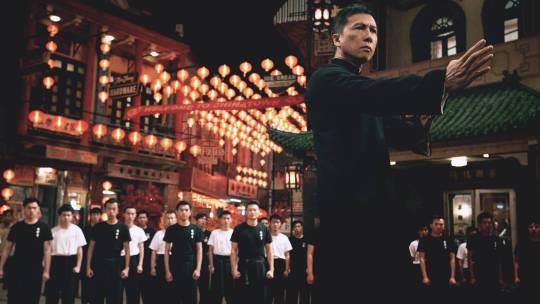
21: Ip Man 4: The Finale (dir. Wilson Yip)
"Is that it?! Is this your Chinese Kung Fu?!"
The finale in the decade-long quadrilogy of supremely silly and borderline racist worship of China finally attempts to tackle America to delightfully amusing results. Scott Adkins doing his best evil R. Lee Ermey impression while slipping in modern neo-con punchlines, neverending Bruce Lee worship, and more nationalism and bad fake American accents than you could ever believe. Yet also a more bizarrely honest portrayal of racism in 1960s America than most movies would ever have the courage to acknowledge. It’s almost fascinating considering how a lot of the non-Asian racism basically serves as set dressing, but they still put more effort there than pretty much every Hollywood movie set in the 60s that isn’t directly about civil rights. But ultimately they're selling you a bill of goods saying "watch Ip Man beat the crap out of racist meatheads" and you better believe they're going to give you what you want.
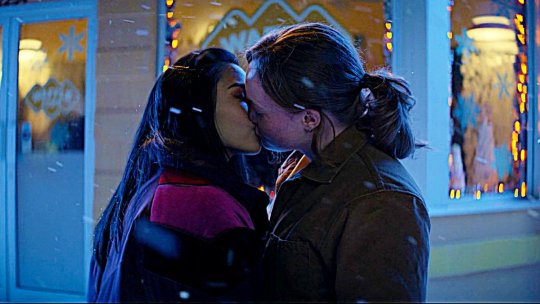
20: Let It Snow (dir. Luke Snellin)
"Have you ever been with someone, and you stay up until like 4AM just talking about everything, and you're just like, I can't believe I get to exist at the same time as you?"
Okay, so let me explain myself on this one:
So yeah, it certainly is a generic teen romcom where everyone plays into basic teenage stereotypes, half the cast is clearly nowhere near eighteen, and all of the romance is oddly chaste. But there truly is something to be said about representation in a romcom, and after a thousand boring cis, straight, hetero couples falling in love for decades, this movie actually managed to hit a lot of notes that are at best rarely explored in the genre and also manages to probably sneak in some genuine firsts. While both the "tomboy/softboy" and "Latina struggling with her family" storylines have been done before, these are some nice, cute little iterations on those befitting a teen-friendly movie. But the Dorrie/Kerry story is not only legitimately groundbreaking, but also an absolutely perfect encapsulation of the types of problems that queer teenagers struggle with during that time of their lives. It's a queer romance, played by two actually not-straight people, with one of them being a nonbinary actor too. And it's not cordoned off into some bargain bin DIY indie that fell out the back of the truck on the way to an indie film festival; no, this is in a major holiday release, with well-known actors, and as one of the central storylines! Plus, it perfectly captures the woes of modern teen coming out, knowing that everything will probably still be cool, but the fear haunting you as all you can do is look jealously at someone who is out and proud. And it does it without being real shitty and horribly traumatic too. Eat your fucking heart out, Love, Simon!

19. John Wick: Chapter 3 -- Parabellum (dir. Chad Stahelski)
"Si vis pacem, para bellum!"
Another year, another John Wick movie. There's more plot; you don't care, and let's be honest, neither do I. Stahelski is here to serve up more badass characters and incredible action, and no one in Hollywood does it quite like him. It's got familiar action favorites demonstrating why they still remain supreme, with Yayan Ruhian, Cecep Arif Rahman, Tiger Chen, and the ever underrated Mark Dascascos. It's got surprising action showcases for Halle Berry, Lance Reddick, and somehow Boban Marjanović. It's got great character actors doing their thing, from the returning McShane and Fishburne to newcomers Saïd Taghmaoui and Anjelica Huston. It's got Asia Kate Dillon as an awesome nonbinary shadow organization asshole. It has a bewildering Jason Mantzoukas cameo. And above all else, it has Keanu Reeves, still demonstrating not only his incredible physical skill, but also how to perfectly utilize his particular acting style to create an iconic character.
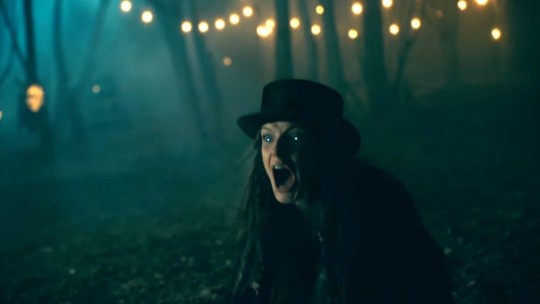
18. Doctor Sleep (dir. Mike Flanagan)
"Man takes a drink. A drink takes the drink. And then the drink takes a man."
While not the most accurate adaption, it might be the only Stephen King adaptation that comes to mind that actually successfully channels what makes him such an appealing author. King's stories have an inherent corniness to them and for as much as you unsuccessfully try to cover that up (look to this year's The Outsider for a good example), it's where the true charm of his work shines. It's what makes this so fun, because as much as an epic, eldritch terror is exciting, it still doesn't have the goofy fun of a bunch of vampiric bohemian drifters led by a Stevie Knicks knockoff in a top hat breathing up souls. Plus, the epic three hour runtime actually allows Flanagan to at least try to cover all the more subtle serious characterizations of Danny Torrance, from his recurring alcoholism to him seeking closure with regards to his parents. It manages to actually make the final act's nostalgia play kind of work, or at the very least get the terrible memory of the Ready Player One version out of my head.
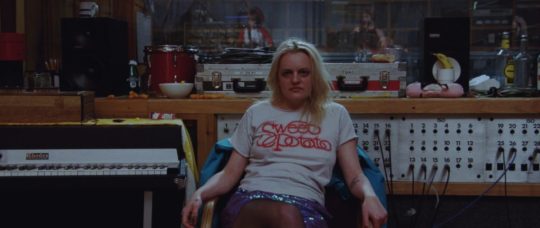
17. Her Smell (dir. Alex Ross Perry)
"I thought you were better than this, but deep down I knew you weren't."
Perry must have had some extra pent-up nastiness in him after having to restrain himself while writing Christopher Robin (by the way, that happened), because he really created one of the nastiest characters in cinema here. Her Smell is the equivalent of being locked in a room with the shittiest person you'll ever meet, as she constant lashes out at everyone and everything with the kind of delirium that the truly demented are cursed with. And credit to Elizabeth Moss where it's due: she really perfectly embodies such a horrible human being and proceeds beat you damn near to death with it during a majority of the runtime. Eventually it slows down and all of the problems become apparent once they script isn't flying by at a thousand words a minute. But Moss literally did her job so well that people fucking hate this movie because of her character, and if that isn't a testament to her acting talent than I don't know what is.
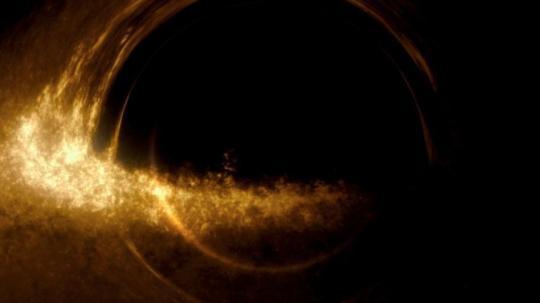
16. High Life (dir. Claire Denis)
"At 99% the speed of light, the entire sky converged before our eyes. This sensation, moving backwards even though we're moving forwards, getting further from what's getting nearer. Sometimes I just can't stand it."
Denis finally makes her English debut with what she does best: nauseatingly uncomfortable sexuality oozing from terrible people doing horrible things. In this case, she takes an innovative detour into sci-fi, setting up a decades-long story of human experimentation, murder, the horrors of space travel, and whatever unholy things are going on inside of the "Fuck Box". It has an appropriately dingy production design too; the clean retro-futurist spaceship design soon dissolves into a torn apart den of depravity, caked in a mixture of filth and dry blood. Pattinson once again manages to be likeable while also being extremely standoff-ish; only playing with his baby daughter do we seem to see him actually enjoy interacting with a human being. Kind of gets lost in the sauce near the end, but at least manages to land some surprising emotional notes considering the kind of horrors that they've shown up until then.
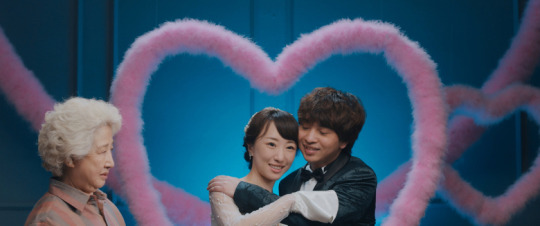
15. The Farewell (dir. Lulu Wang)
"Chinese people have saying: when people get cancer they die. It's not cancer that kills them, it's the fear."
Lulu Wang's followup to Posthumous is such a massive step up in talent it's not even funny. She manages to make such a wonderfully soulful and loving movie about impending death by utilizing near perfect comic timing to defuse a situation that threatens to stray too dark. Not to mention her point of view on modern China from a non state-sponsored eye actually captures a much more accurate shot of the country itself. It's almost as if an Edward Yang movie had set itself more modest expectations -- it's pleasant, goes down well, teaches you a couple of things about Chinese culture, and manages to do it all in only a hundred minutes. And Awkwafina manages to hold her own against far more experienced actors, even if you can tell her Mandarin is still a little spotty.

14. Uncut Gems (dir. Josh and Benny Safdie)
"I think you are the most annoying person I have ever met. I hate being with you, I hate looking at you... And if I had my way I would never see you again."
Adam Sandler's magnum opus performance -- there will never be another character that fully embraces every grating aspect of his style of acting and manages to weaponize them for two anxiety-inducing hours of hell. Sandler's Howard Ratner is an absolute sewer rat scumbag, an untrustworthy coward, and a perennial fuck-up of epic proportions. But he's still so charismatic and powerful on screen that you root for him every time he drives you further up the wall. And the Safdie brothers know how to keep him moving too, never letting the audience catch a breath of air for this movie-length panic attack as the odds stack further against Howard each minute. Whenever you see Sandler phoning in his comedies for fat checks, just remember this performance and how pretty much every awards committee completely ignored this film. No wonder he doesn't bother trying anymore.
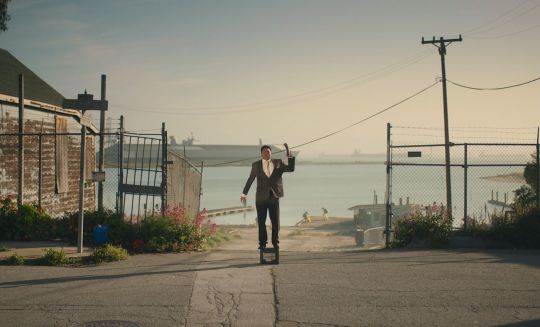
13. The Last Black Man In San Francisco (dir. Joe Talbot)
"You don't get to hate it unless you love it."
A wonderfully evocative love letter to a changing city that is so full of life in every way, from the vibrant movement of the camerawork to the bombastic and powerful soundtrack blasting throughout. But it actually plays more like a New Orleans' funeral march, a melancholic chronicle of the original denizens of San Francisco even as the city warps into the caricature that it's slowly becoming. There is a definite feeling that the aggressive gentrification is unavoidable and even the love of the original quirky denizens can only stave off the metaphorical steamroller that paves over the past. It makes for a wonderful counterpoint to the previous year's Blindspotting: both about young black men dealing with gentrification in the Bay Area, but Blindspotting starts as a very angry comic satire that eventually ends on a note of hope and a will to survive the changing tide, whereas this begins as a joyous celebration of the city and ends on a heartbreaking resignation in the face of everything. Both come from respectively very different sides of San Fran culture, but it's rather interesting seeing each have such different approaches to the same topic.
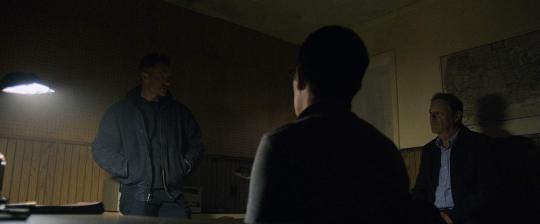
12. The Standoff at Sparrow Creek (dir. Henry Dunham)
"How do we know it's not you?"
A simple "pressure cooker" scenario done to perfection: one empty warehouse, a bunch of hardened standoff-ish militia men, a missing gun, a ticking clock, and a whole lot of suspicious side eyes and probing questions. It helps that the gruff suspects are a perfect who's who of roughened character actors, all previously well-versed in playing suspicious people, and all of them hiding the kind of unspoken rage that makes a man secretly join an armed militia. All of this told with a nerve-wracking minimalism and style as weirdly detached from reality as some of these men are. One hell of a debut for Henry Dunham and hopefully a sign of good things to come.

11. Booksmart (dir. Olivia Wilde)
"How about we play a *rousing* round of J'ACCUSE!"
Profoundly silly and yet also so disarmingly sweet, Olivia Wilde whips a wildly stylized portrait of Gen Z high-schoolers and the many ways that they vastly differ from their older peers. Certainly much more welcoming and accepting of the diversity of teenagers than pretty much any other teen movies from the past, although they still poke fun at some particular brands of modern "wokeness" too. Stuffed to the brim with wonderfully weird characters, between the lovable catty theatre duo of George and Alan, the cringe-inducing desperate rich kid Jared, the endearingly dumb thirstball Theo, the dorky and blissfully unaware queer-bait Ryan, the effortlessly cool and extremely "top energy" Hope, and the absolutely batshit wildness that is Gigi. But mainly it serves as a vehicle for Devers and Feldstein, with both bouncing perfectly back and forth off each other in moments of comedy and drama. Feldstein always pulls off huge laughs pretty much every line and Devers sells a perfect amount of baby-gay awkwardness in one of the sweetest (and heartbreaking) queer romance stories in film. But above all else, it's just so damn fun and aware of what teenagers are actually like than most movies ever have been.
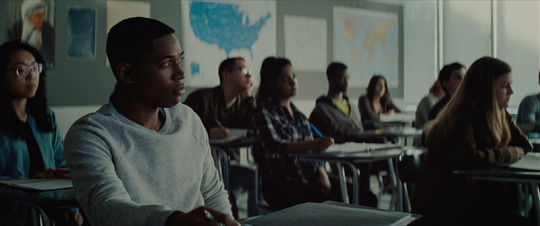
10. Luce (dir. Julius Onah)
*chuckles* "You really think I believe that stuff?"
One of the most wildly uncomfortable experiences in recent cinema history, but not due to any horrifyingly explicit graphic content being shoved in our faces. No, Onah and Lee created something much more discomforting: a constant challenging of all our biases and stereotypes, of us wanting to give chances and have faith in those that we trust. Kelvin Harrison Jr. delivers one of the best acting performances in recent memory because he's able to literally do everything; his Luce somehow manages to perfectly walk the tightrope required for a performance like his. With him behind it, Luce is such a charming, loving, likeable character but there's always just something that seems off about him. And even if Spencer's Wilson has a fixation on him that crosses all sorts of legal and moral boundaries, wouldn't we be cheering her on under different circumstances? In a way, she herself is trying to communicate a lesson about perception too, one that also mires in deep, troubling waters. Even if the film still feels very stage-y due to it's source material, the cold clinical aesthetic only further helps it make us squirm in our seats.
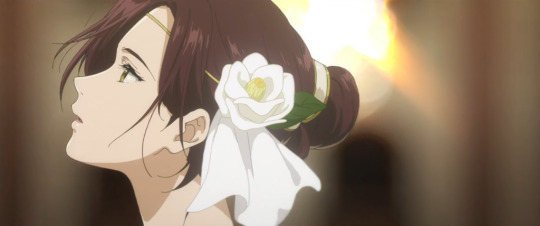
9. Violet Evergarden: Eternity and the Auto Memory Doll (dir. Haruka Fujita)
"Nobody wants a letter that cannot be delivered."
An absolutely magical experience that artistically excels over the original TV series it's based off of. The production is still as impressive as any other KyoAni work, but the composition and lighting in particular are outstanding, selling the social isolation of the first half and the childlike wonder of the second half. Beginning with a sublime Victorian romance in the first half, the story eventually morphs into a tribute to the workers of the world, the cogs in the machine. But in the context of the studio's recent history and the horrific arson attack that claimed 36 members of the studio, this instead comes off as a battlecry against the opposition against them. It's a story valuing those who are overlooked in the process of creation, a story about strong determined women, a story of a young girl defining her own future against society. KyoAni as a studio were most known for treating all their employees exceptionally as well as being a primarily female-led studio, both unfortunate exceptions in the industry as well as the target for a lot of unfair online hatred against them (and surely played some sort of role in why the arson attack happened to them specifically). To see the studio make their first post-attack work so proudly emblematic of what made them unique makes this so much more powerful than you would expect.
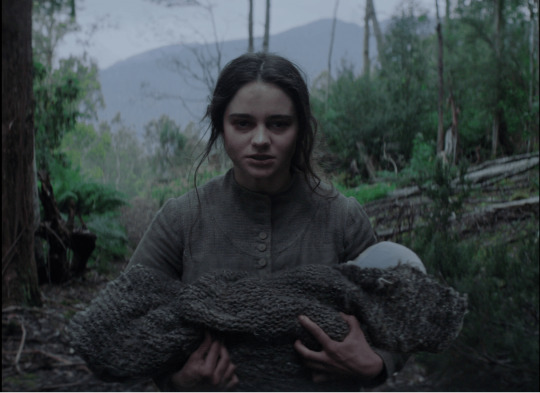
8. The Nightengale (dir. Jennifer Kent)
"You know what it's like to have a white fella take everything that you have, don't ya?"
The classic revenge fantasy narrative warped into a bleak, cynical portrait of racist cruelty in 1800s Tasmania. Jennifer Kent, improving leaps and bounds from the relatively straightforward Babadook, crafts a searing indictment of the foundations of colonialism and the misogynistic undercurrent of the barbarous society. It's a revenge movie where the vengeance is horrible and unsatisfying -- there's no crowd pleasing murderous money-shots, just brief moments of comeuppance in the face of everything in the world working against our two protagonists. Those who are squeamish should be aware that it is exceptionally graphic and grueling at times, although Kent does manage to keep up a very good pace for the two and a half hours of hell.

7. Transit (dir. Christian Petzold)
"They say that those who were left never forget. But it's not true. They have the sweet, sad songs. Pity is with them. Those who leave, no one is with them. They have no songs."
Hitchcock by way of Kafka -- a classic existential mystery told in a disorienting separate reality not quite like our own. It's a bold move to take a Holocaust set narrative and completely throw out the actual setting itself, but Petzold only enhances the weird themes of the story by taking it to a completely different but still very familiar time. This is a classic tale of becoming the person you say you are but really aren't -- then begging the question of what if you're not the only one also living a false identity. Buoyed by an excellent and very enigmatic lead performance from Franz Rogowski, who displays a tremendous skill for playing somebody so closed off but also very charismatic and watchable.

6. Once Upon a Time... in Hollywood (dir. Quentin Tarantino)
"When you come to the end of the line, with a buddy who is more than a brother and a little less than a wife, getting blind drunk together is really the only way to say farewell."
Tarantino trades in his B-movie worship and penchant for comical bloodbaths (well, for the most part) to make something I certainly didn't expect from him: a relaxed hangout movie about getting old and falling out of fashion. Exceptional production design whisks us away to the height of Hollywood and three different people all looking at their future careers in very different lights. Leo gets to stretch his wings in all sorts of silly fun ways and Brad Pitt finally lets go of the young superstar image and easily slips into his more natural "hot single dad" swagger, playing the most effortlessly cool character of his career. Tarantino sets aside time to look back on his own flaws as well and playfully reflects on his own particular ...quirks. Easily his best since his 90s prime and the first time in a long time I've felt the maturity that he showcased in Jackie Brown.
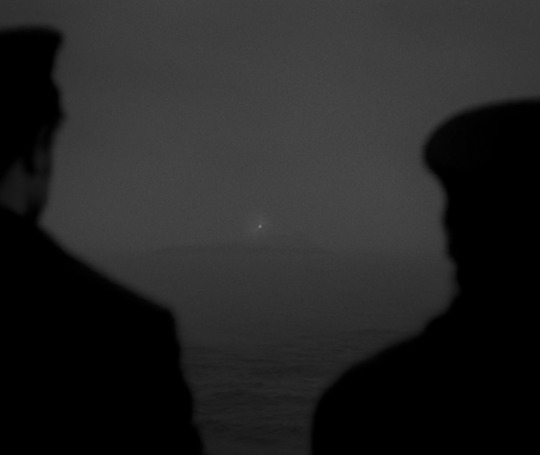
5. The Lighthouse (dir. Robert Eggers)
"Damn ye! Let Neptune strike ye dead Winslow! HAAARK!"
Hyper-masculine mania as told through a wonderful blend of dark comedy and cosmic horror and with some of the most lush black-and-white cinematography maybe ever in a film. Eggers' now trademark devotion to absolute accurate period detail in both visual design and dialogue greatly helps this reach transcendent heights. But it's truly the two performances of Dafoe and Pattinson that help it weave a perfect spiral of insanity that also manages to be so oddly fun. Never could there be any other paring of actors that would perfectly showcase these two dirty sea-dogs going stark raving mad at each other so well.
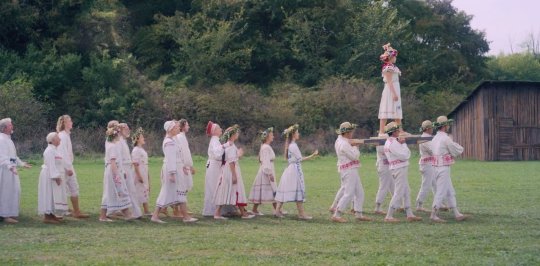
4. Midsommar (dir. Ari Aster)
"As Hårga takes, so Hårga also gives."
(Director's Cut)
Every generation deserves their own paranoia-fueled pagan horrorshow, but Aster strikes a much deeper vein in his epic take on the classic territory The Wicker Man had previously claimed. The brutal rituals of the Hårga are only set dressing most of the time, with much more focus poured into the vile toxicity plaguing the relationship between students Dani and Christian. Reynor's Christian is such a perfect portrayal of a terrible influence -- he's charming, fun, and likeable when he's on your side, but the second anybody goes against him his seedy manipulation begins to seep into everything he says. Pugh continues her winning streak too, delivering a broken person desperately trying to put a smile on while falling apart on the inside as she realizes she truly is all alone in the world. While some might be disappointed by the lack of actual "terror" for a good chunk of the movie, Aster has found something much more likely to scar us than these friendly Swedish cultists.
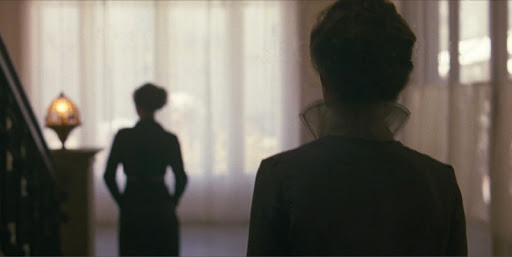
3. Sunset (dir. László Nemes)
"The horror of the world hides behind these infinitely pretty things."
After striking gold with Son of Saul, Laszlo Nemes takes a hard turn into a very different genre but manages to create a wonderfully unique spin on classic detective noir. His signature camerawork powers this yarn, successfully taking the claustrophobic eye of Saul and using it to give a truly immersive sense of place in the tumultuous world of 1913 Budapest, where danger is simmering under the surface and ready to boil over at any moment. After all, noir is always about the eye of the detective, so Nemes' style takes it to a literal degree where everything outside of Irisz' field of vision is incomprehensible. We catch the same shady sideways glances and hushed whispers at the same time she does too. The plotting, like all noir tales, gets a little too complex for its own good, although it's less because of double-crossing and deceit and more from the story slowly dropping its connection to reality to function on a far more allegorical level. But as far as immersive, experiential cinema goes, not even 1917 can stack up to this film's highs, as the enraged lower-class populace eventually comes for the heads of the bourgeoise and Irisz suddenly realizes she is in the very wrong place at the very wrong time.
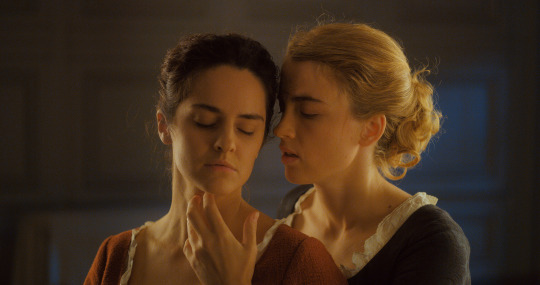
2. Portrait of a Lady on Fire (dir. Céline Sciamma)
"Do all lovers feel they're inventing something?"
An absolutely breathtaking portrait (hehe) of yearning and love, so astonishingly romantic and actually aware of what will make a woman swoon. Every technical aspect is perfect, from the gorgeous locale to the lovely windswept dresses to the soft, classical cinematography. But the true magic comes from Merlant and Haenel perfectly delivering every line of Sciamma's wonderous script. Those two have a sexual tension strong enough to burn down the theater, as their shy glances turn into deep longing stares and both their steely professional reserves give way to poorly suppressed joy at just being able to be with the other. Even their initial terse dialogue melts into pure romantic splendor, as they lovingly catalog all the little gestures the other does when flustered. Their connection during filming was powerful enough to fuel rumors around the two in the press and is currently providing the desire for every thirsty lesbian who finishes this to immediately pull up videos from the press tour and hunt for those same things between the actors themselves. And trust me, they are there.

1. Parasite (dir. Bong Joon-ho)
"Not 'rich but still nice.' Nice because she's rich, you know? Hell, if I had all this money, I'd be nice too!"
Very rarely does a film come along that actually warrants to be described as "perfect", as in one that literally generates no critiques in any way even if I was forced to pick something at gunpoint to complain about. But Parasite truly does every single thing right. Even Bong's tonal whiplash style, which does grate on me at times, somehow fits perfectly here as the schemes become increasingly madcap and the increasing sense that this will all come crashing down horribly mounts ever higher. Until then, it's an absolute joy to watch in every way, as Bong stacks the card deck higher and all the characters dive further into the sewer for their own benefit. The midpoint pivot works wonderfully too, as it goes to show that literally every person is getting played in the world of Parasite. It's massive success is only surprising to those who haven't seen it: it's the perfect movie for the era it came out in and may as well be the watershed moment for a new age of cinema where Hollywood finally admits that it's not the king of the world anymore.
#top 25#2019 in film#parasite#portrait of a lady on fire#sunset#midsommar#lighthouse#fuck capitalism
1 note
·
View note
Text
The Beautiful and Damned :: Book One, Chapter 2
Regretfully, I couldn’t read nor transcribe yesterday, having gone tete-a-tete with my dentist lady and then having to resort to painkillers afterwards. But today! And oh, what a chapter this has been.
To expound further on Fitzgerald’s abilities of description, I must talk about Gloria. In the sub-dividing chapters preceding the one titled The Beautiful Lady, much is spoken of Gloria by others around her, for her, and on behalf of her. This undoubtedly builds suspense in the reader anticipating her and Anthony’s first meeting (and of course, knowing as most of us know that they are to marry later, a double curiosity). In revealing her at last in this chapter, Fitzgerald peels back the layers of her ever so gradually, in fragments of dialogue with one or two sentences trailing after them, dropping hints at her likeness and character. This graduality and sparseness is in such contrast, again, to the writers of today, who prefer to introduce to us a character in one big, hefty block of description.
One could argue that such a big, hefty block can often be dismissed or forgotten, and put in the back of the mind as inconsequential. But sprinkled around the action tactically like this, as she enters Anthony’s apartment, hands over to him her fur, and begins remarking on the decor of the place — Gloria becomes immediately a living thing. Hell, he doesn’t even mention that her hair is blonde until much later. (I for some reason interpreted her as a rich brunette, or deep russet, though this too is minor, inconsequential details when considering Gloria. Details which many contemporary writers hold of the utmost importance. But I digress—)
In describing her, Fitzgerald is indeed sparse, never weighing down the readers with many hefty and on-the-nose specifics authors often rely upon. And yet, I see Gloria as clearly as one would see her in a scene of a movie, for these sparse commentaries, made like brushstrokes on a painting upon her likeness and character, paint the most striking and vivid portrait of Gloria one could ever hope for.
Consider this:
On a photograph she must have been completely classical, almost cold — but the glow of her hair and cheeks, at once flushed and fragile, made her the most living person he had ever seen.
“The most living person” is quite the quote, don’t you think? A beautiful punchline, at any rate. Here’s another most excellent description, relying once again not on the physicals, but speaking on temperament and character:
Carefully, Gloria considered several locations and, rather to Anthony’s annoyance, paraded him circuitously to a table for two at the far side of the room. Reaching it, she again considered. Would she sit on the right or on the left? Her beautiful eyes and lips were very grave as she made her choice, and Anthony thought again how naive was her every gesture; she took all the things of life for hers to choose from and apportion, as though she were continually picking out presents for herself from an inexhaustible counter.
Immediately tells you the kind of person Gloria is, doesn’t it? It’s uncanny.
And thus ends most of my technical analysis, now into the silly. I did mention at the start, how I saw myself in Gloria. Well, here are the forgotten fragments that basically make me Gloria:
“I wish you’d tell me how old you are.”
“Twenty-two,” she said, meeting his eyes gravely. “How old did you think?”
“About eighteen.”
“I’m going to start being that. I don’t like being twenty-two. I hate it more than anything in the world.”
“Being twenty-two?”
“No. Getting old and everything. Getting married.”
“Don’t you ever want to marry?”
“I don’t want to have responsibility and a lot of children to take care of.”
(I’ve had this exchange verbatim with a friend of mine once. Although I was 20 at the time telling her that I would thenceforth consider myself 16 because I could. Minor differences. )
Here’s another:
“I just think of people,” she continued, “whether they seem right where they are and fit into the picture. I don’t mind if they don’t do anything. I don’t see why they should; in fact it always astonishes me when anybody does anything.”
“You don’t want to do anything?”
“I want to sleep.”
I relate to that so damn hard, I’m earnestly considering getting ‘I want to sleep’ tattooed on me. No joke.
There’s an observation about authors Fitzgerald makes that is rather poignant on page 36, and a funny one on getting old on page 38, but this is turning less into analysis now and more ‘look at this bit that I found amusing’, so I shall spare you rehashing those parts for the sake of brevity.
There is one part towards the end I want to talk about though, and it imbues that magical quality Fitzgerald takes on every once in a while, his words so cinematic as to bring forth that scene to you like you were simply watching a movie. (honestly, who needs film versions of Fitzgerald novels when there are simply the novels themselves?!) It’s this magic neither-here-nor-there quality, of a world beyond ours, something fantastical bordering on the supernatural — like the green light in Gatsby or the eyes of Dr. T. J. Eckleburg. A passage hypnotising as it lulls you into a trance you don’t even realize. The effect is slightly lost without having read the preceding, but listen to this:
“Do you object to this?” enquired Anthony.
Gloria’s face warmed, and for the first time that evening she smiled.
“I love it,” she said frankly. It was impossible to doubt her. Her grey eyes roved here and there, drowsing, idle or alert, on each group, passing to the next with unconcealed enjoyment, and to Anthony were made plain the different values of her profile, the wonderfully alive expressions of her mouth, and the authentic distinction of face and form and manner that made her like a single flower amidst a collection of cheap bric-a-brac. At her happiness, a gorgeous sentiment welled into his eyes, choked him up, set his nerves a-tingle, and filled his throat with husky and vibrant emotion. There was a hush upon the room. The careless violins and saxophones, the shrill rasping complaint of a child nearby, the voice of the violet-hatted girl at the next table, all moved slowly out, receded, and fell away like shadowy reflections on the shining floor — and they two, it seemed to him, were alone and infinitely remote, quiet. Surely the freshness of her cheeks was a gossamer projection from a land of delicate and undiscovered shades; her hand gleaming on the stained tablecloth was a shell from some far and wildly virginal sea…
Reading it back now sans context, it’s a bit more difficult to grasp at the power of a passage like this, but leading into it after the description of the cacophonous cabaret hall that came before it, the effect is singular. Everything else fades into background but Anthony and Gloria, and a cinematic spotlight falls onto Gloria. It is pure magic, writing transmuted into a shimmering kind of sorcery that leaves all else around it dull, that is so uniquely Fitzgerald and cements his place among the greats (Hemingway fucking wishes).
Oh, but to have one moment like this in my own work, is all I dream of!
1 note
·
View note
Text
August 10th-August 16th, 2019 Creator Babble Archive
The archive for the Creator Babble chat that occurred from August 10th, 2019 to August 16th, 2019. The chat focused on the following question:
What is your process for planning out the paneling/layout of each comic page?
kayotics
I’ve finally gotten my process down to a process that works for me. For Ingress Adventuring Company https://www.ingress-comic.com/ I start with scripting the whole chapter out. Step two is thumbnailing the whole chapter out, so I can figure out pacing and paneling. I started to do thumbnailing on sheets of printer paper, which has been easier to figure out my drawings and to see how the comic flows on paper. Once that’s done it’s pretty straight forward. Panel borders in pencils > rough sketch & balloon placement > letters and tight sketch in pencils > ink letters > ink bubbles and borders > ink the rest of the page. Then I scan it and do the colors. With the thumbnail process I kind of do the chapter twice in pencils but it ended up being way easier in the long run, since I hate doing panel layouts and doing that work in the beginning is way easier.
Steph (@grandpaseawitch)
Afraid there's no scripting for https://oldmanandtheseawitch.tumblr.com/. It's all pretty much in my head but I go over it literally every day, and I have a few roleplays archived to keep things on the right track, but that's about it. Thumbnails are done in big batches. Last batch was about 20+ pages done at once. Thumbnailing is also where I figure out composition and such. Just detailed enough to give me the idea of what I want, with enough leeway to do as I please on the page itself. Thumbnails done, I make a batch of empty pages, and go in and make all the panels for the 20+ pages. Since I already know the composition from the thumbnails and I have digital guides set up on each page, that's super easy. With all of those done, then I just go back in, do rough sketches for each page. Cleaner than the thumbnails but not too clean yet. Once the rough sketches are done, this is actually where I'll add text and balloons, so that I know what the bubbles will be hiding and don't have to waste extra time. After that, I do as much in large batches as I can, usually cleanup sketches, then inks, maybe flat colors. But after that point, I just have to sit down to work on individual pages until they're done. And voila!
authorloremipsum
http://signsofthreecomic.webcomic.ws/comics/ For Signs of Three, I always start with the script, get the basic idea of what I'm going for in the page. Then panel layout and gesture sketches of people and the environment. THEN! BEFORE I START DETAIL SKETCHING! I LAY IN THE SPEECH BUBBLES. Seriously speech bubbles are critical to controlling how readable your page is and so so many people don't seem to see that. They must lead from one bubble and panel to the next in an easy to understand way or your reader will get lost and confused. So I always make sure to put bubbles in during thumbnailing. After that it's just basic refining the sketch, lining, coloring, and shading.
AntiBunny
Typically in AntiBunny http://antibunny.net/ I thumbnail a page first to decide what needs to happen. After that I look at those event and decide panel layout based on how best to depict them, factoring in what needs to fit, who needs to be there, and how time will pass. I'd say time is the most important aspect, followed by emphasis, and then content. Typically bigger panels depict more time passing, but that's not a concrete rule. A big panel can depict a very short moment in time. The amount of population has a big play in that as well. A lot of action in a big panel can be a short moment in time that's just heavily emphasized. A big panel with very little movement depicted is great for dwelling on a single moment, which is great for slowing down the pace of reading.
heroesofcrash
I used to not have a script at all, but now I tend to write out scripts in advance. I keep a four-panel format in mind (2x2) when I write a strip, but I'll sometimes combine or split panels depending on the flow of the story. (I'll place some sample strips below, showing a "default" 2x2 strip, and a few that combine or split panels based on that structure) I then draw guidelines in Manga Studio (I have the CD, not the digital version that became Clip Studio Paint) for where each panel will be. I put the dialogue in each panel, sometimes editing for space or to fit it nicer in a speech bubble. I can usually visualize how a speech bubble will generally fit in a scene; it's easier for me to draw around the bubble than to draw first and add the words later. After I sketch out the panels, I may move the words around to fit in the scene a little better. I may even tweak it a little when I draw the speech bubble around the text, if I don't like how the text fits in the bubble or how the bubble fits in the scene. As I mentioned earlier, here's two strips. One has four panels (which is the most common for me), the other has six. The latter is made by splitting the upper right panel into two skinny panels, and breaking the bottom half into three panels rather than two. Not only does it give me enough panels to do a complicated visual gag, but having panels with a similar layout next to each other makes the action easier to follow, and thus makes the gag flow better.
Desnik
For http://ask-a-warlock.tumblr.com/, I make tiny thumbnails to quickly go through layouts. I tend to have a few different ideas and doing small/quick is a lot easier on the revisions
LadyLazuli
For Phantomarine (http://www.phantomarine.com/) I've gotten into the habit of thumbnailing each chapter extremely roughly in a sketchbook, then bringing the pages into Photoshop and shifting the panels around to improve the flow throughout the chapter. I put in rough dialogue bits to anticipate balloons, then I get going on rough sketches and color placement in Procreate, then clean up and paint the sketches, then bring them back into Photoshop to finalize the page. It's honestly really haphazard, just because I tend to change details and dialogue around a lot, depending on what I feel is working/failing - but that core chapter flow doesn't change too much, just so I don't get caught needing more pages in one part. So... I keep the roughs very rough, but I adhere to them quite strongly? The details are where things get experimental (edited)
JUNK
I am a fool who hasn't been doing thumbnails lately, so my process is the typical script>sketch>inks>tone.
MJ Massey
I start with my storyboards, which are just skethcy first drafts of the pages in a sketchbook. I have a vague genreal story outline, but this is where I really figure things out--both the layouts and the script.
In my head, I tend to see things as if they were an animation, so I am usually trying to catch that sense of movement in the comic panels. I try to keep things interesting and thinking outside the typical grid layout, usually resulting in some pretty crazy stuff. It's easier with action scenes, but I try to mix up everything. I do my final pages on 9x12 bristol (I used to work on 11x14 but that was...too big for markers), but there are many times where I will scrap the storyboard and do something totally different for the final page, or add or take away things. But it's good to have that first draft down as an idea, it's easier to adjust from there if I need to
FeatherNotes
@LadyLazulii love your process ahhh!!!
LadyLazuli
@FeatherNotes MERCIIII
Nutty (Court of Roses)
For Court of Roses http://courtofroses.thecomicseries.com/ I mostly sketch out thumbnails, scan them in, and lineart/color. Like most of y'all, I have a general story outline, and specific scenes get more detail as I work closer to them. If there's a scene that has emotional hits and I want the right dialogue for it, I'll script it. If there's lots of exposition and detail, I'll script it. Just, largely winging it on my end!
Tuyetnhi
I usually work from loose script dialogue for a chapter, to get the feel for the page, then start thumbnailing. After thumbnailing tho, I redraw the thumbnails on csp, sketch, then change/define panel layout or render till finish. Often, my thumbnails don't give me enough info till I start the page. And that's good for me since it's still under a set guideline but I don't feel rigid on "Oh gotta make it exactly like this" or some sorts. Same goes with dialogue/scripts too since I tend to go back and correct panel layout if i don't think it was strong enough on the first go. Idk, I treat it more of a fluid process that I can go back and fix due to how I digitally paint/render things. Still the process depends on the page i'm working on, how strong the thumbnails are, dialogue, and color scheme theme I had with certain pages. Most of it is 40% gut feeling tho. Images shown here how I got OIYD! Ch. 2 - Page 15 to be to its finished form. [thumbnail-> Rough sketch -> add with color -> final render with dialogue]
ErinPtah (Leif & Thorn | BICP)
I took scans/notes about each step of the BICP page-making process back during chapter 5: http://www.bicatperson.com/comic/step-by-step/ ...and then again, seven years later, during chapter 28: http://www.bicatperson.com/comic/the-webcomic-page-making-process/ The art has gotten better, but the actual workflow...basically hasn't changed. (If it ain't broke...)
snuffysam
First I have the script for the entire book, which I'll have finished ahead of time. At the start of each chapter, I'll divide the upcoming script into pages based on how I want the comic to be paced - e.g. making sure the setup and punchline to a joke aren't on different pages, making sure there's not too much dialogue to read on a single page, etc. Then, when it comes time to do the page, I'll split things up into panels. That's pretty easy - I generally want to keep things to one line of spoken dialogue per panel, or one "action" per panel. Sometimes there'll be beat panels, sometimes two people will talk in one panel, but that's the general rule. Next I... put together the panels. I don't really use thumbnails to work this stuff out - important panels or panels with more dialogue are bigger, less important panels or ones with less dialogue are smaller. I try to make sure panels don't intrude on each others' vertical space, because i've always found that complicates things in a web medium - but that just means there's less for me to worry about. I make sure the panel layout is different from the previous page, and if there's an action I need to emphasize I'll do something weirder than just a rectangle. If there's not enough space on one page for the panel sizes I want, I'll make it a double-length or triple-length page. As for the actual artwork - I try to make sure the reader's eye line is led along the page. So panels on the left would have the characters generally facing to the right, and panels on the right would have the characters generally facing downward and to the left. I try to leave enough space for word bubbles - and in general, the characters on right panels will be placed lower than characters on left panels, because i want the speech bubbles to move downward as you read across a row. And, well, that's basically it!(edited)
authorloremipsum
finally someone who considers the eyeflow (am joking, mostly)(edited)
snuffysam
i didn't always, but a reviewer once told me how one specific action scene was really difficult for him to parse because the eye flow was just completely in the wrong direction, nearly every panel. so since then i've been making a conscious effort about it :p it's tough when there's two characters up against a wall and you need the page to flow the other direction from how they're standing though, lol.
#ctparchive#comics#webcomics#indie comics#comic chat#comic discussion#creator interview#comic creator interview#creator babble#comic tea party#ctp
0 notes
Photo

American idiot....
I haven't read the book, and am not overly familiar with the author. I just saw a brief "Thanksgiving" clip on a CBS TV show this morning, in which Jim was featured. I viewed this program airing in my new home country of Costa Rica, I'm originally from Canada and proudly so. Jim's comment about Canadian thanksgiving was an uneducated and idiotic representation. Comedian or not, he is definitely an unworldly and isolated American citizen. Broaden your horizons dude.
Go to Amazon
May be funny to the uninitiated.
So disappointed. I love Jim Gaffigan. I do not care about "clean" comedy or family friendly anything as it seems most fans of his do. But his delivery and punchlines are fantastic despite that. I have seen him live several times and cried laughing. I have all of his official comedy albums and listen to them and enjoy them repeatedly. (Minus the most recent, Obsession, but that's a different review.) Anyway, my complaint with this book, and after starting it I recalled the same thing from Dad Is Fat, is these are basically his stand up routines in written form. I'm very early in and he's already repeating something I've heard a thousand times on the albums. Why would he do this? Is someone who's never heard of him going to pick up his book to read, completely unaware he's a successful comedian? That scenario is not nearly as likely as dedicated followers and fans like myself and others buying it to support him....And that's basically what this seems to be...Supporting him. He does have 5 kids in a NYC apartment after all so more power to him. But I feel taken advantage of by paying $20 for a book of things that I already paid for in a different format now portrayed as something new. I haven't perused the table of contents yet but based on the seafood bit early on and the Dunkin Donuts Ham hamburger thing, I can only imagine there will be an entire chapter devoted to Cinnabon, the convoluted and unsuccessful McDonalds rant from Mr. Universe and he probably closes with Hot Pockets later in the book. They should sell these books as Selected Works of Jim Gaffigan 2000-2014 or something like that and then label each segment with "From King Baby 2009" and not present them as anything new because if you're a fan you've most likely heard this all before. And that, to me, is pretty lame and a blatant money grab. The next book will be about miscellaneous things like bowling, camping, whales and creepy guys in hotel pools I guess or maybe a full book of all his jokes with a religious theme and that one I will skip entirely.
Go to Amazon
A funny look at how much our lives and culture revolve around filling our stomachs
I confess that I haven't listened to any of Jim Gaffigan's comedy shows... but as someone with a love-hate relationship with food (I love food, I just hate what it does to my body), I can highly identify with this book's topic. Don't we all love food, even though the media and science are constantly telling us that the foods we like best are terrible for us while the foods we wouldn't willingly put in our stomachs are what keep us healthy? Jim's observations regarding food and how heavily it influences our lives and culture are not only funny, but quite true to life, and manage to say some revealing things about ourselves in the process.
Go to Amazon
Happy
Yummy and funny
Funny guy
Magically delicious!
Not enough laughs
Five Stars
A laugh a minute,
Great laughs!
Funny funny funny
Ok
0 notes